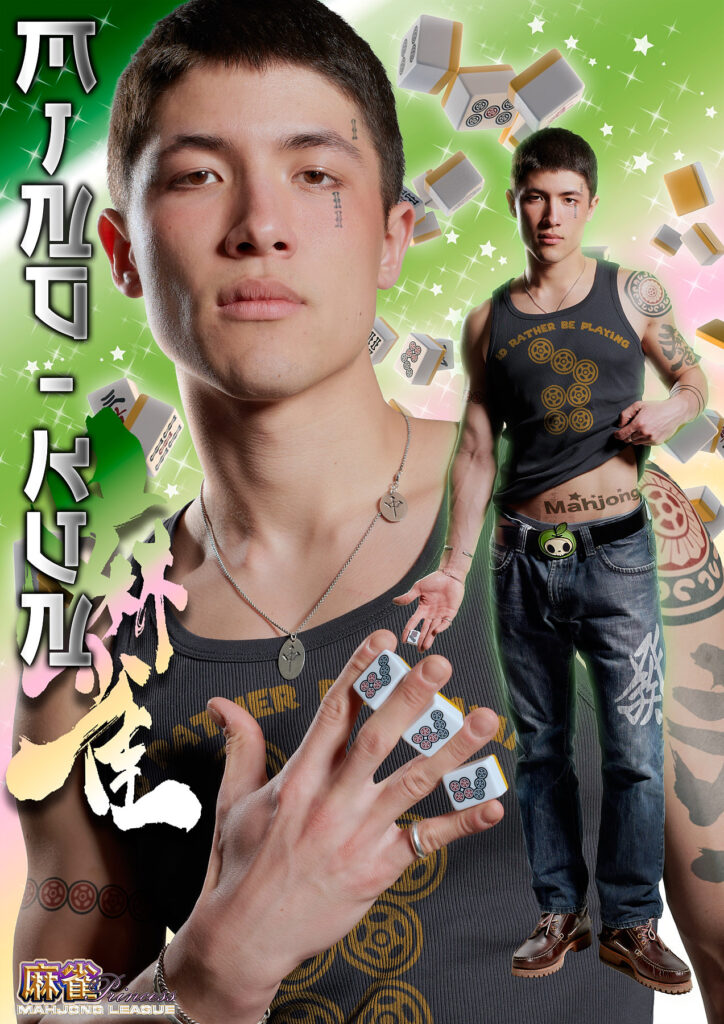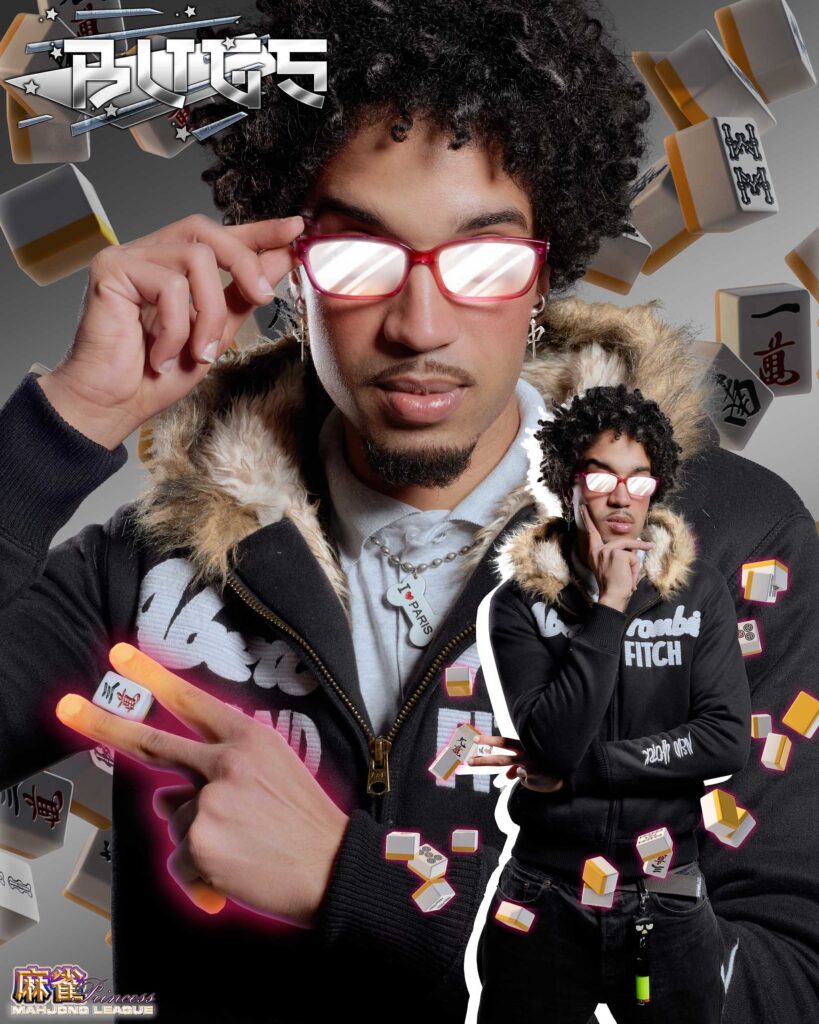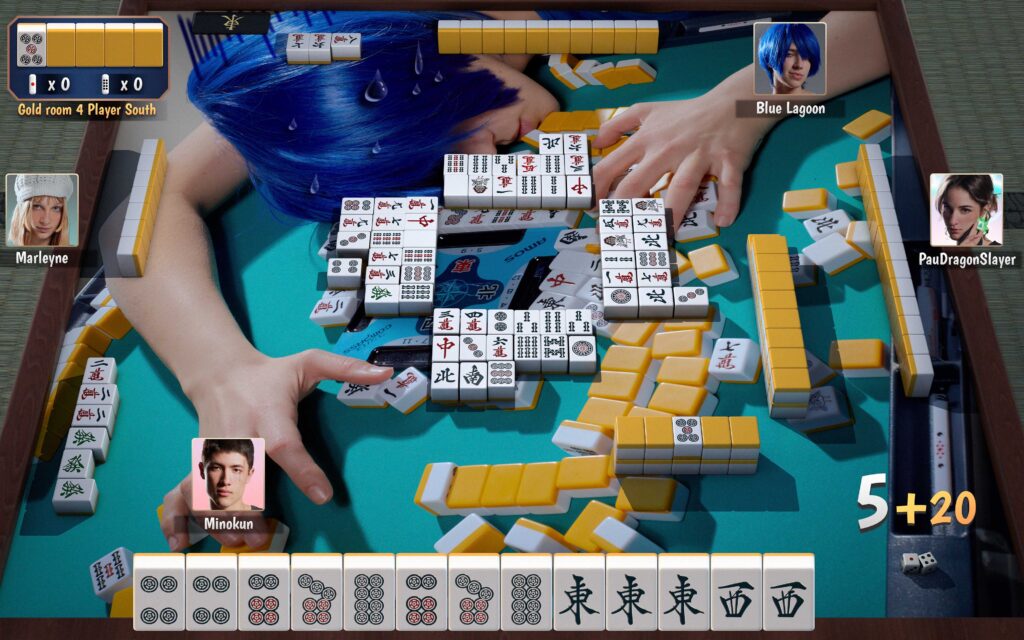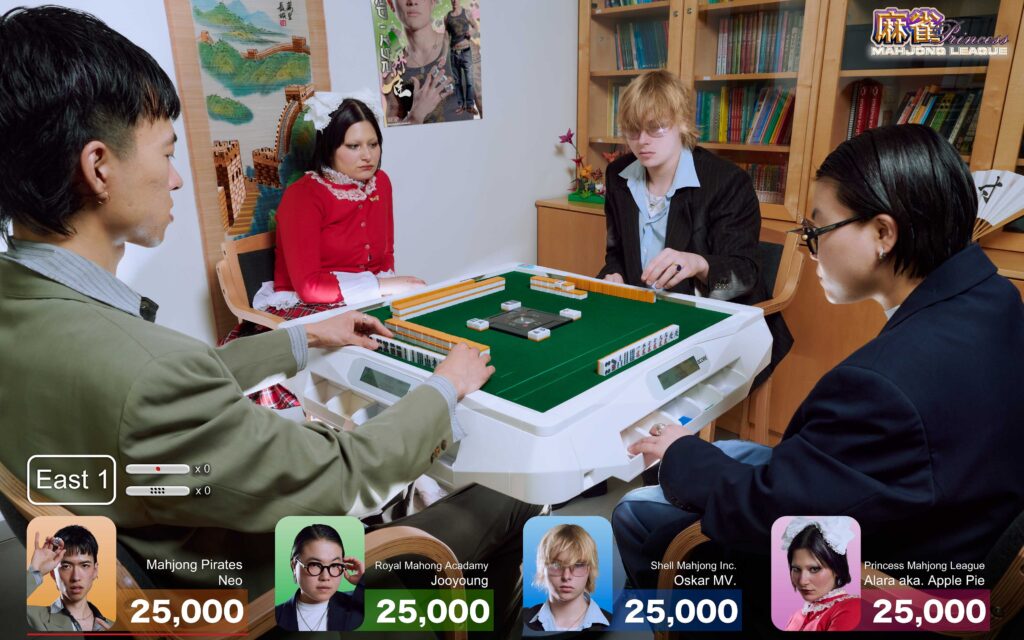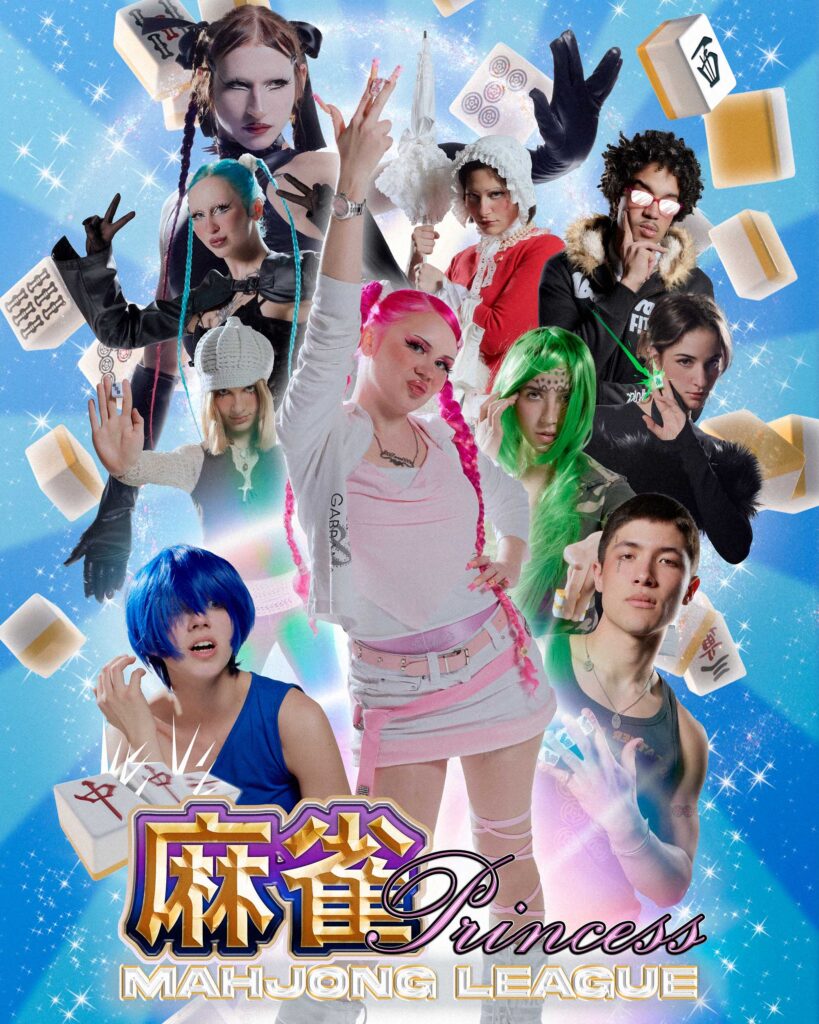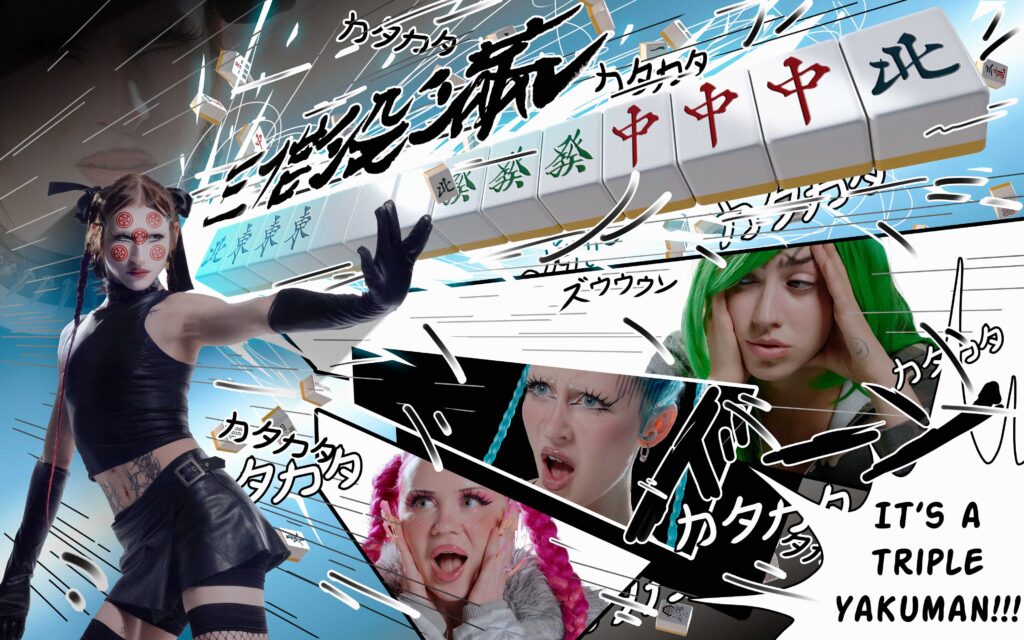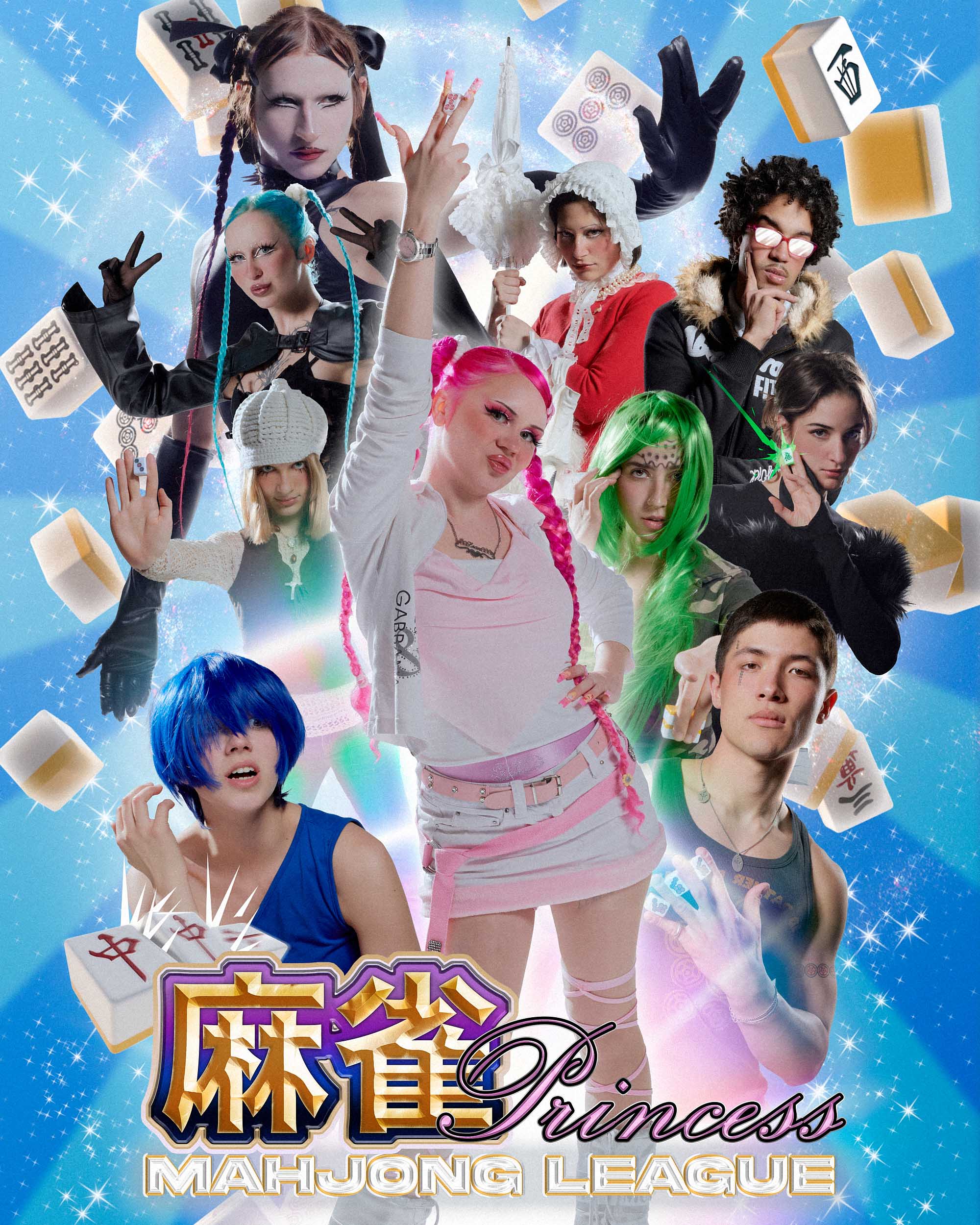
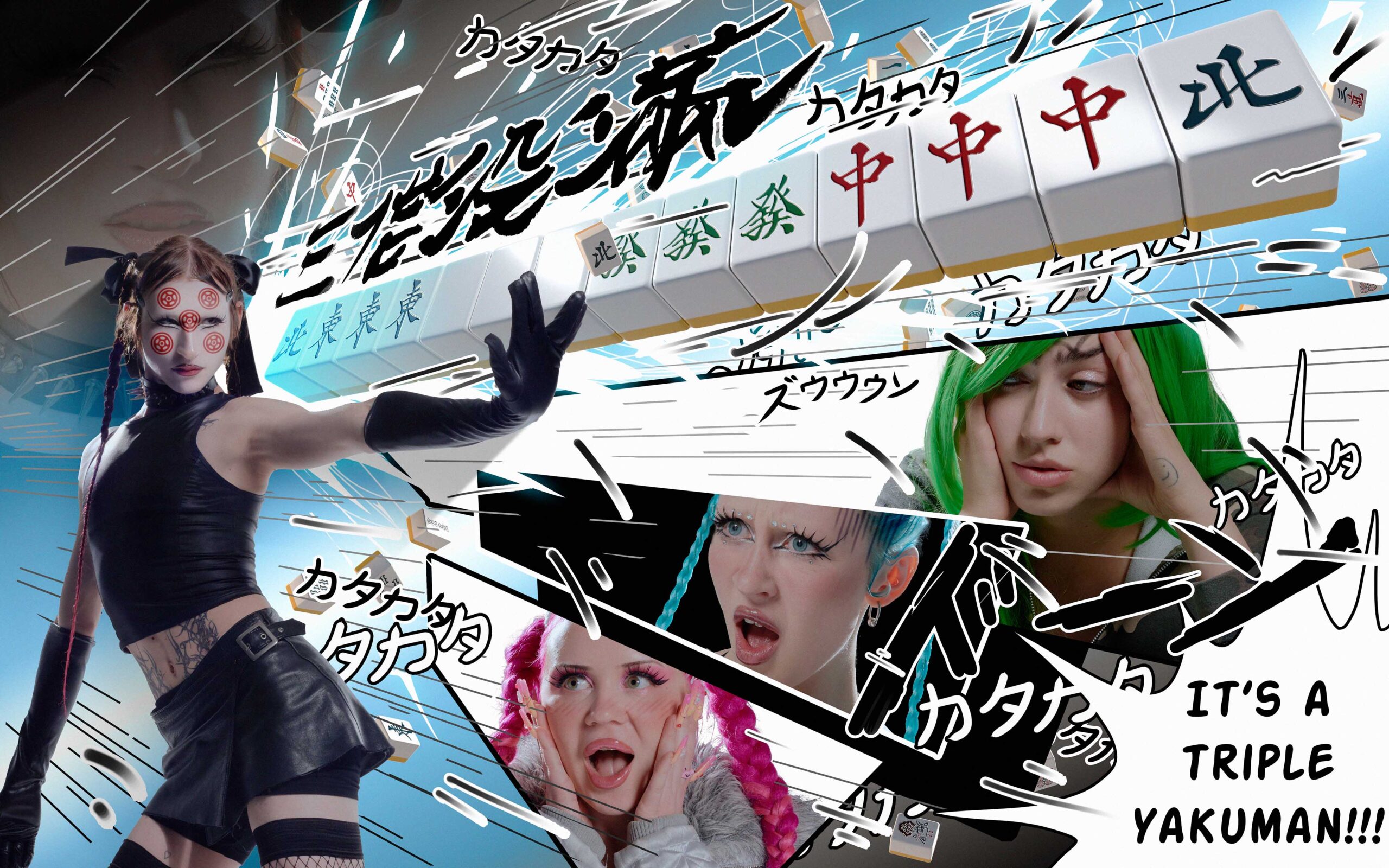
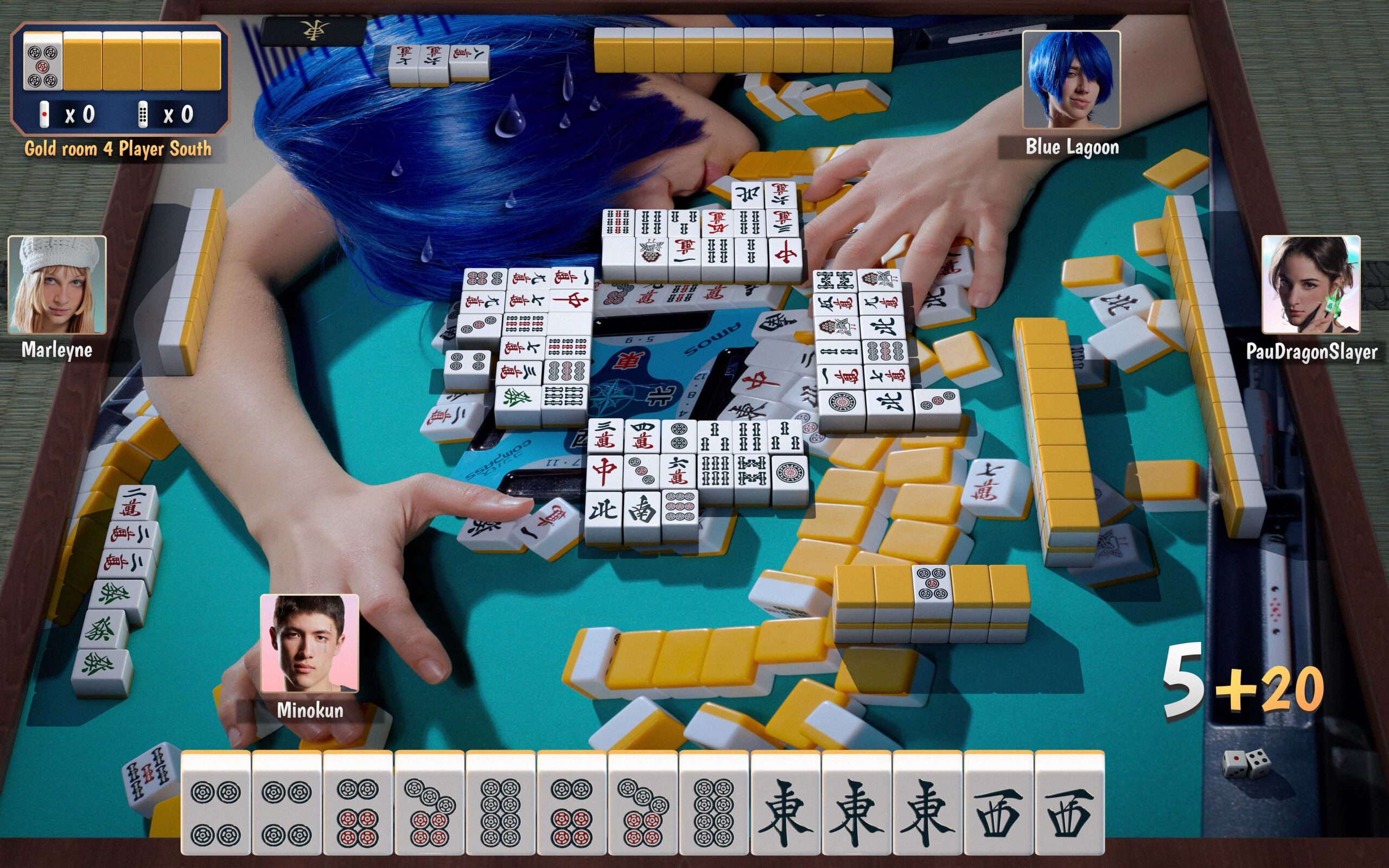
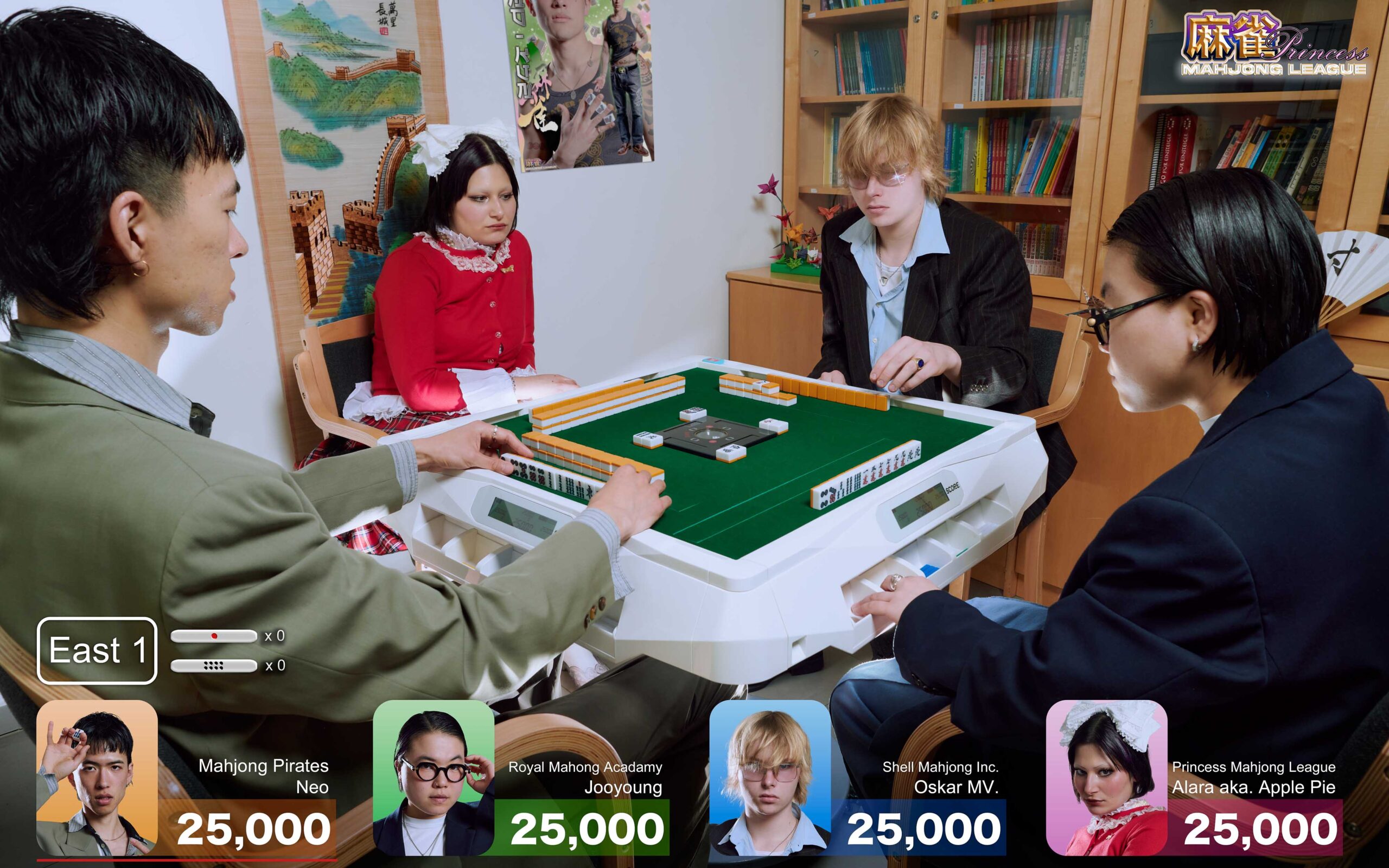
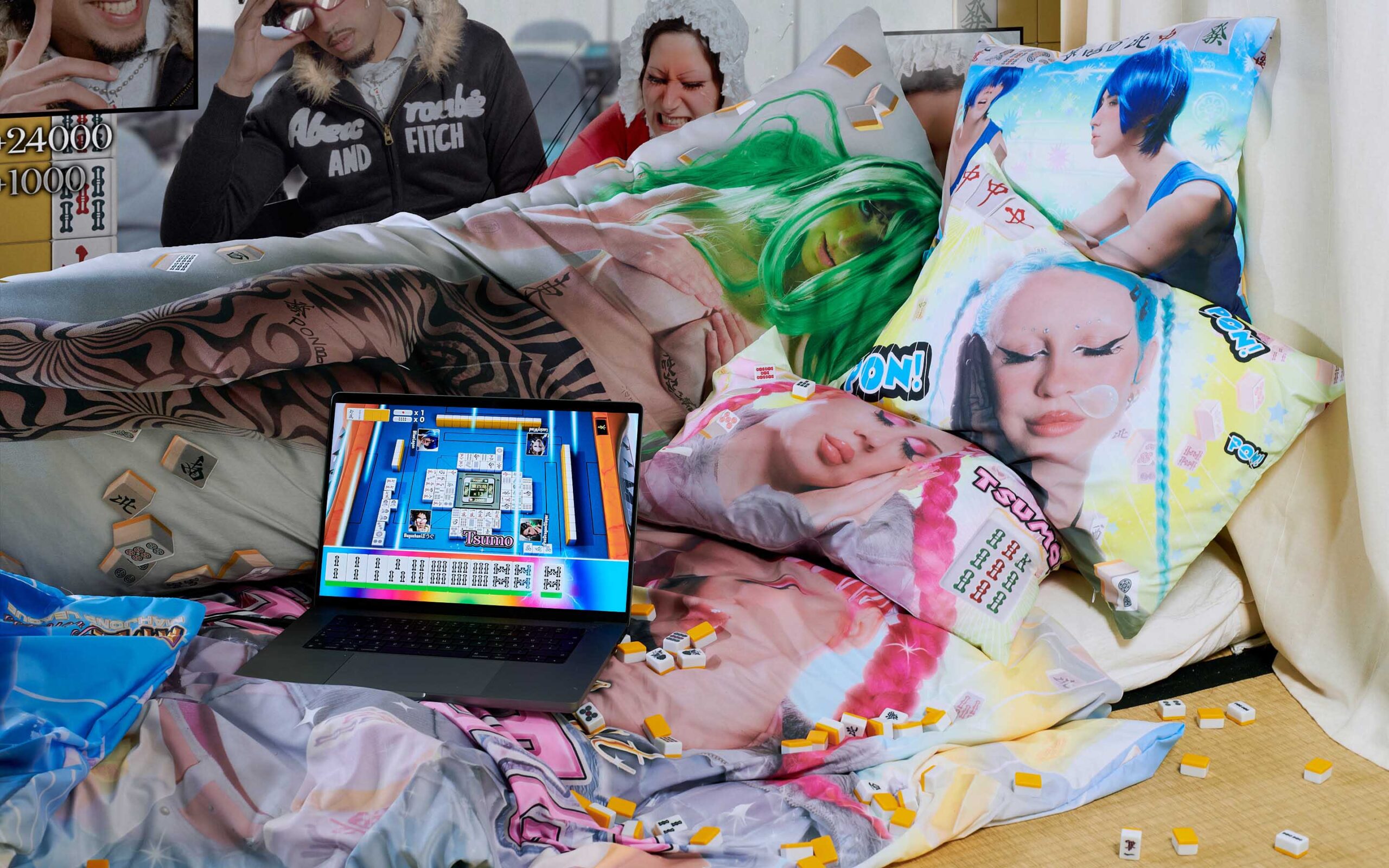
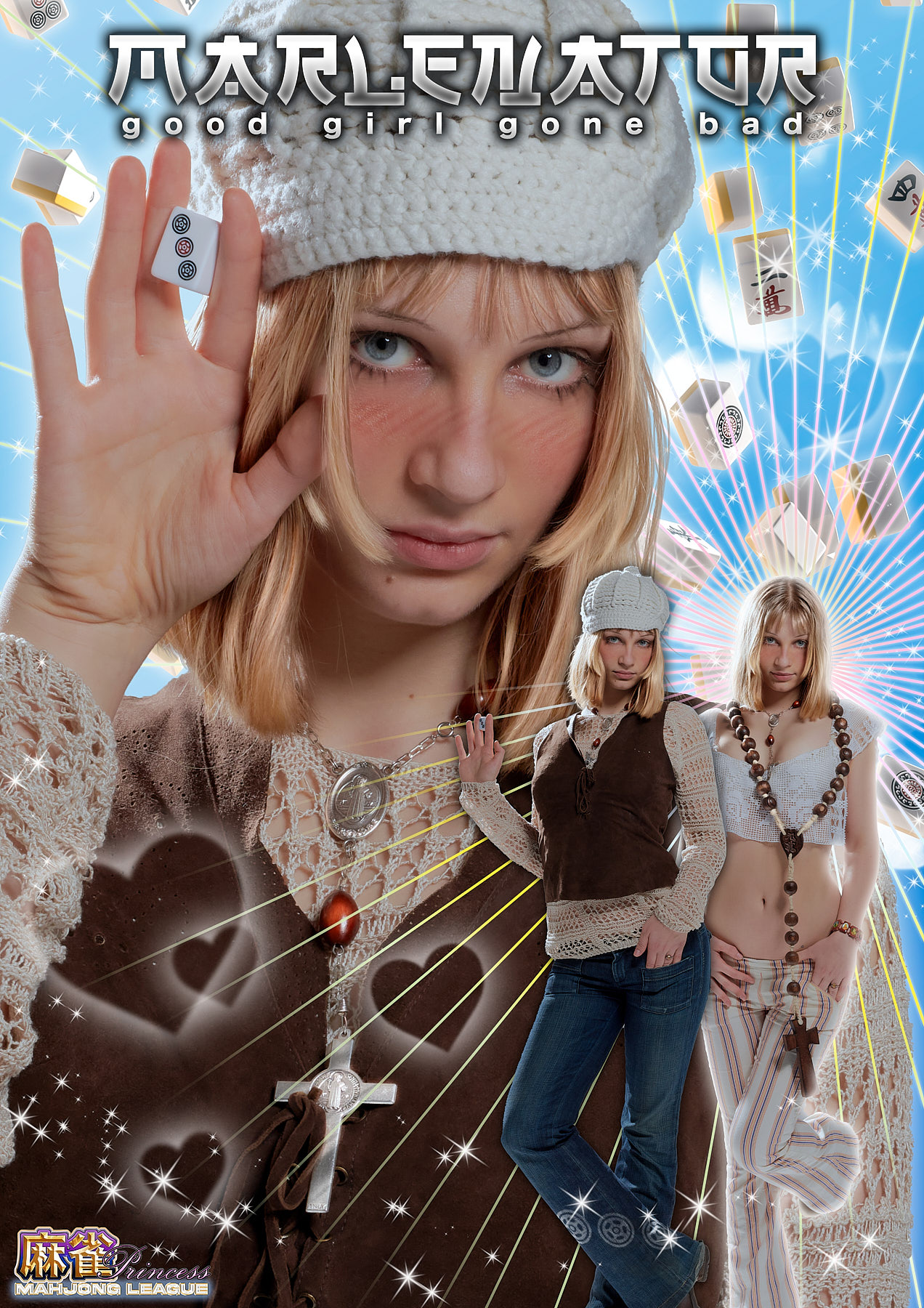
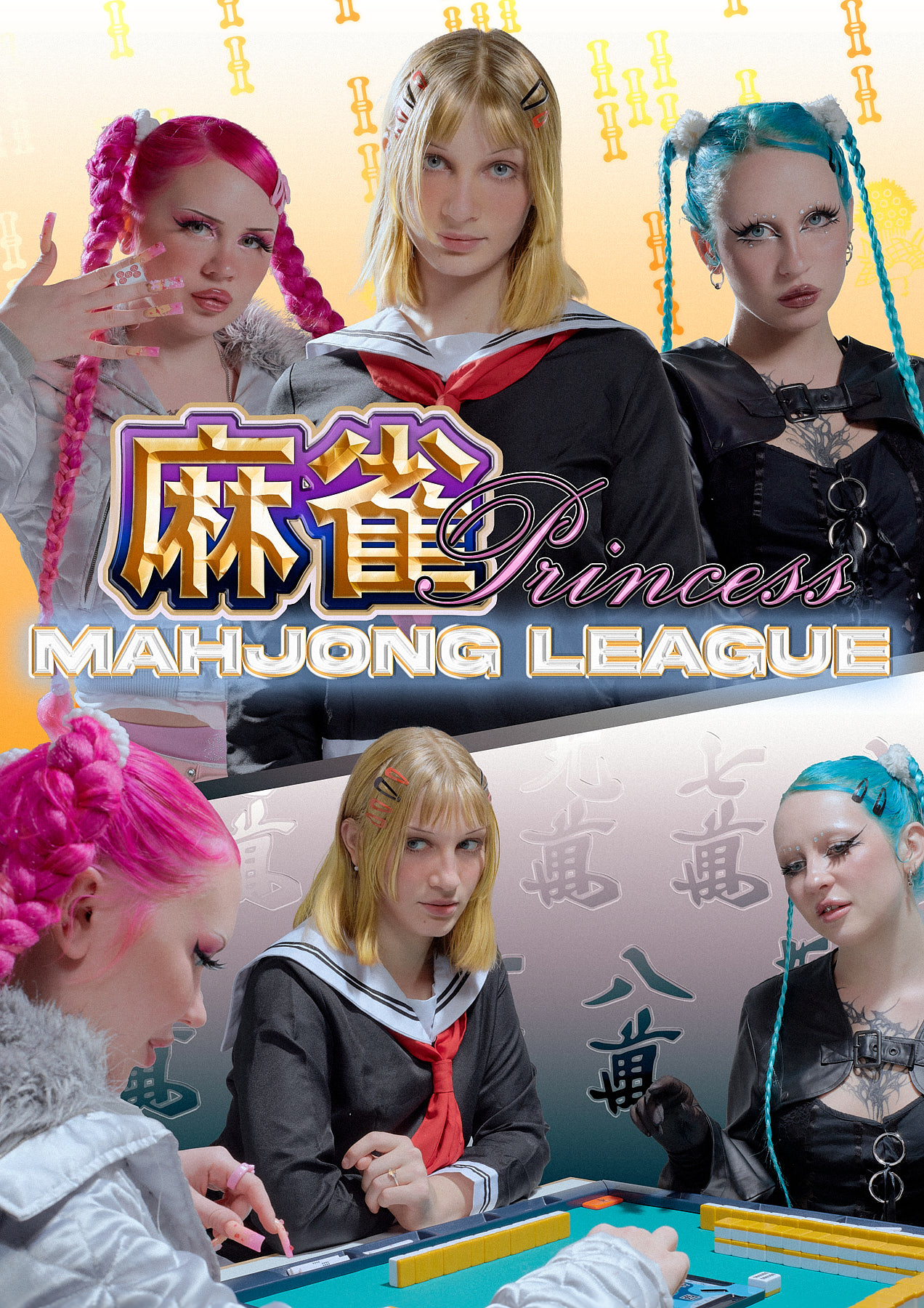
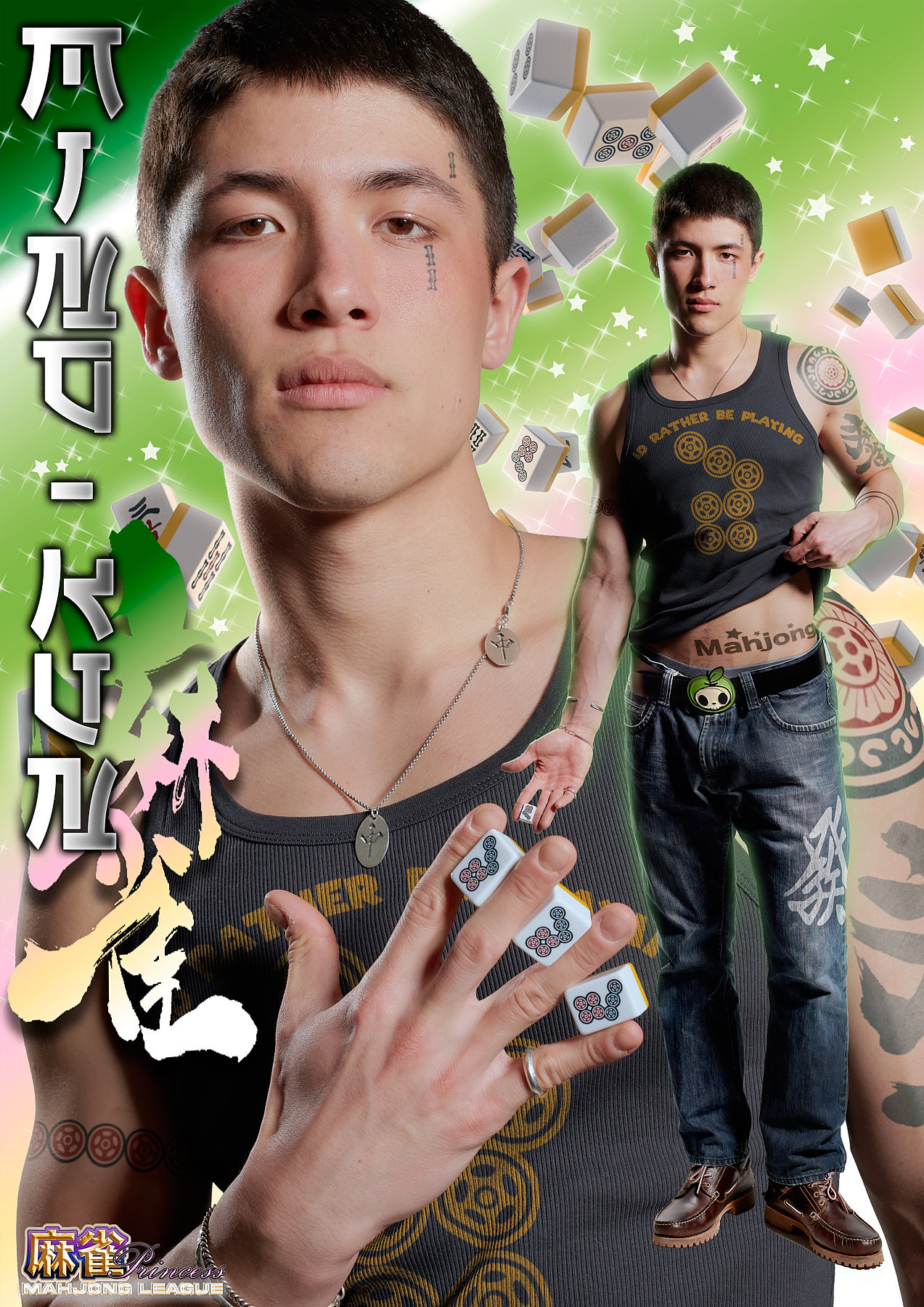
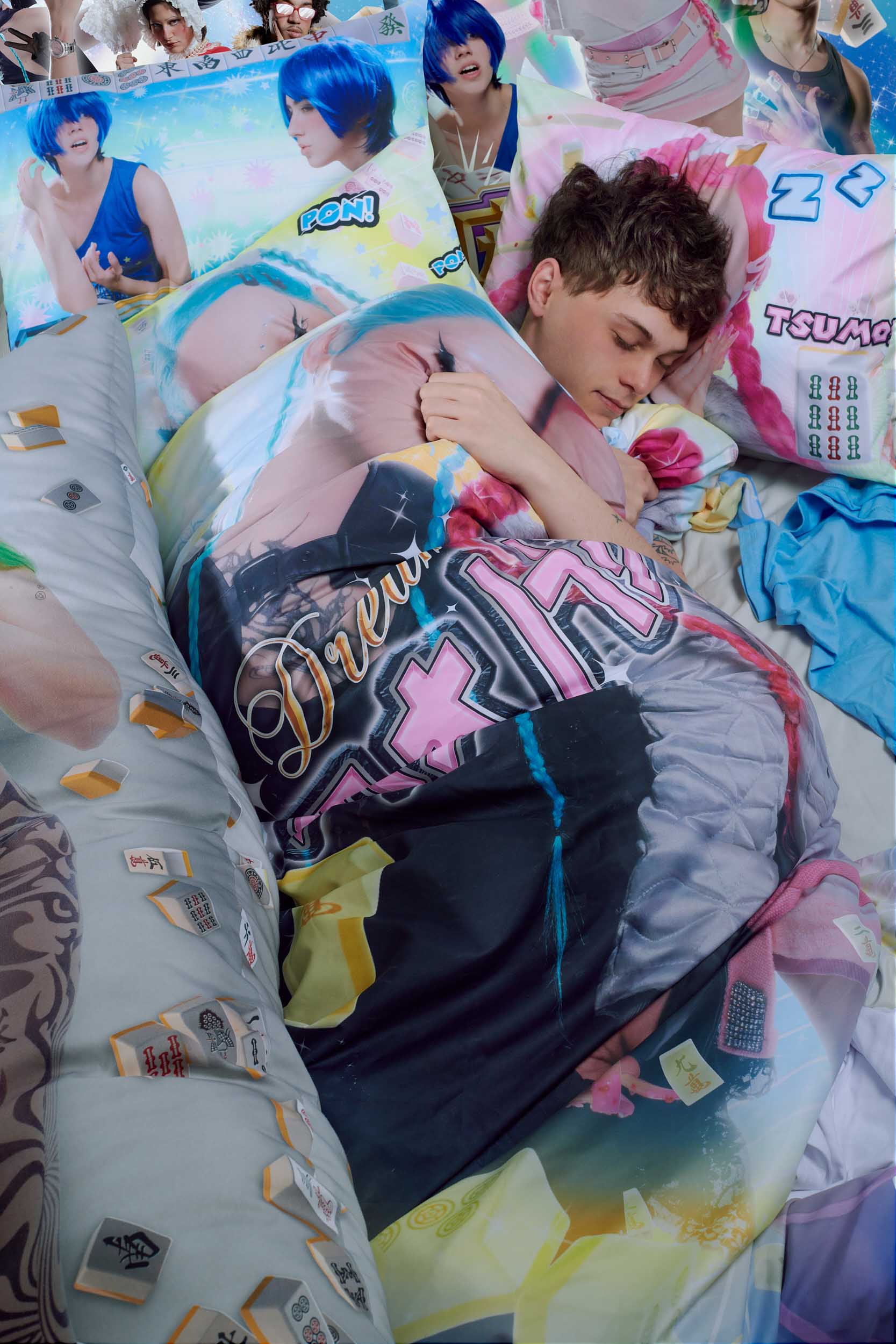
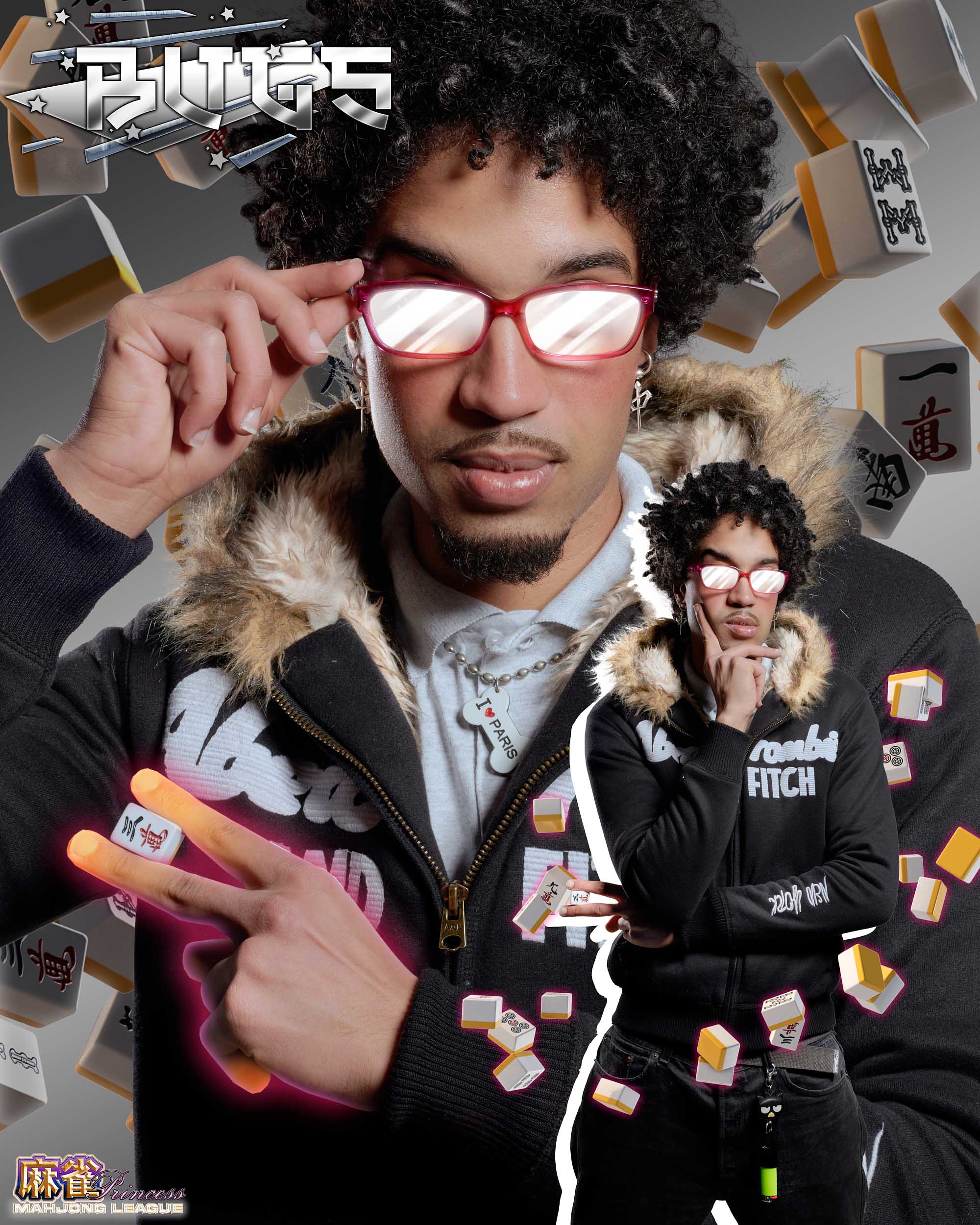
Julian Lee Harather
September 2024
I’d Rather Be Playing Mahjong, interview run by Anna Skuratovski.
Temple Magazine
Your diploma project I'd Rather Be Playing Mahjong is about game culture, virtual spaces, and obsessions. Can you tell us a bit more about your connection to the subject and your approach?
Julian Lee Harather
Mahjong kind of crystallized into being this hyper fixation of mine over the course of the last few years, especially during Covid. I turned to that game as my main pastime and a form of escapism. I knew it for a really long time, but mostly as this kind of iPad or computer solitaire game that's more based on memory. When I watched Crazy Rich Asians, which featured the game at the plot's climax, something shifted. In the movie, the two main characters work out their differences over a game of Mahjong, which held such power, literally like a battlefield.
Temple Magazine
So it’s a game that creates tension?
Julian Lee Harather
Yeah, or it also kind of resolves tension. The way this movie codified the game as having such high cultural value and symbolizing self-respect, heritage, or family tradition resonated with me a lot. Also, as a second-generation immigrant, I feel like someone who kind of knows these things from a distance but isn't that familiar with a lot of cultural practices, as maybe other people are, which made me feel like I had to learn more about this myself.
Temple Magazine
You often work with digital collages and create your own worlds within your images. What’s the starting point of these worlds?
Julian Lee Harather
A lot of the collages that I do are kind of an end product of the things that I'm interested in at that time. Like, I had this phase where I was really into classical painting, especially from the Classicism era, where the compositions were extremely precise and detailed. Sometimes I would just copy certain references from these paintings and translate them into my own aesthetic while trying to keep the essence of how the image works.
I generally work in a very image-based way, meaning most of my research is purely visual—focused on how images intuitively work for me or connect to the topic I’m working on.
Temple Magazine
How did you approach the research for this project?
Julian Lee Harather
I took the conceptual research a lot further than I usually do and dived deeper into the historical background and socioeconomic aspects. Mahjong has extremely close ties with Chinese currency, so the original versions were based on Chinese paper bills. Overall, the entire imagery of the game is still very closely related to money, gambling, and maybe also capitalism at large. I came across the term "commodity fetishism," which, simply put, describes the human tendency to ascribe values to material objects, giving these objects an incentive to actually want them. This is why we often have the same kind of object in different versions, like Pepsi or Coke, and we’re trapped in the illusion that we are making a different emotional choice by deciding on one brand. This can also be ascribed to media franchises, which at large create these worlds that people can immerse themselves in and kind of identify with, connecting them to emotional values portrayed by the characters.
Temple Magazine
How so?
Julian Lee Harather
I guess we kind of mystify these franchises into something we heavily identify with, and therefore consume everything we can from this franchise, fan culture-wise. Everything around a media franchise is just as much a part of world-building as the core of a video game or show. If you think of Pokémon, for example, it started out as a video game but then branched out into a TV show, merchandise like toys, card games, and all of these products that carried the Pokémon logo. So, buying a McDonald’s Pikachu Happy Meal is kind of in the same realm of consumption as playing the game because both are part of the same universe.
Temple Magazine
For I’d Rather Be Playing Mahjong, you also decided to create merch.
Julian Lee Harather
The project is, in general, a simulation of making my own franchise based on Mahjong that uses the same tropes of having different mediums. So, you have this video game, things that look more like a comic book or a TV show. And then, with all those base media, you get merchandise products like posters featuring individual characters, T-shirts, bed sheets, body pillows, and maybe also other products that give an overview of what would be encompassed in this brand. For me, it was funny to turn this game, which is still very niche in the West, into this giant franchise with its own media powerhouse.
Temple Magazine
Within your series, you created the Princess Mahjong League franchise. How did you develop your main characters?
Julian Lee Harather
I stuck to certain tropes or archetypes that I strongly associate with. Since there is no actual narrative in the project itself, it was important for me that by just seeing the characters, you could make up your own story. You have characters that people would themselves kind of attribute as antagonists or pick their own main character simply based on the styling, facial expressions, poses, or color schemes. People can make their own cluster of relationships and decide how the characters relate to one another. Since the anime or manga visual language is usually super over-the-top and highly visually coded, there is this tradition of highly exaggerating, which also makes it quickly readable and clear what traits a character represents simply by their appearance.
What’s funny is that I also realized that, at least for me, it feels like every person, if you look at them closely, doesn't really look like a good person. Like, they all kind of look like they have ulterior motives.
Temple Magazine
Which is part of the tension of the game?
Julian Lee Harather
For sure, and it makes so much sense for this game that is so heavily based on gambling and is in some parts really stigmatized as Yakuza-related, like a gangster game played illegally with money and very high-stakes bets. So, the game does have dark aspects to it as well. I think it’s interesting to have this very surface level with a very colorful, bubblegum, poppy, youthful aesthetic, but then to have the characters in this aesthetic still look like they're, you know, naughty. Like if they had the chance, they would immediately take all your good tiles.
Temple Magazine
Would you say that, in that sense, merch can also be something that people are drawn to and find cool because it’s wearable? Like you mentioned before, one can consume something without being a part of it or the community?
Julian Lee Harather
That’s a big aspect as well. I find it kind of absurd that a whole world of a franchise, which is filled with so much symbolism and meaning, can somehow be reduced to just a merchandise product. It’s a bit of a full loop—starting as something obscure and then trying to make it so relevant that it loses some of its value again in the process. It can be very similar to the current trend of wearing football shirts for a sportier aesthetic or vintage band shirts for a cool look, turning them into a styling product.
Temple Magazine
Is it also something to maybe signify that you are part of knowing that this is cool? Like with people wearing vintage band shirts, the music seems to have had a bit of a comeback.
Julian Lee Harather
Definitely, you show that you're part of this group, or you're in on the joke or whatever. I think that’s the same thing I hope this joke will flourish in the future—that people would wear these shirts without knowing the game.
Temple Magazine
You chose a bedroom installation for the presentation of your work. How does this private space relate to Mahjong?
Julian Lee Harather
It relates more to the general topic of obsession and fan culture. The bedroom is usually the space where you can see most of the images or where the products of this franchise flourish. For me, it made sense to show a very intimate space where these objects exist, in a real space. I think it’s also a space that a lot of people curate especially for themselves. It’s a safe place where you can search for an identity, and a room can be really telling of the values and interests a person has.
Temple Magazine
Does it also connect to the fact that when you play Mahjong online, you spend most of your time in this virtual space, and you’re also kind of alone in your bedroom playing that game for hours? And when you look up from the screen, you see it all around you?
Julian Lee Harather
Yes, it totally plays with that. It’s a form of escapism, like curating your own reality. But I’m not trying to make a statement that this is necessarily good or bad. I think it's supposed to play with this idea that, through this obsession, everything around you that you at least have control over is closely tied to this one specific world.
Temple Magazine
How do you plan to continue this project?
Julian Lee Harather
My main goal is to make a book out of it, that looks like a single Mahjong-tile. For me it once again reflects on this philosophy that a whole universe can fit into a single drop of water and how this plays with the scaling of worlds and realities. I’m also planning to make more images with the objects that are now in the installation to give them a presence in the book as well. I think it would be funny to play with different tropes of how fashion and merchandise could be consumed, and to show this whole range of the way that these objects are advertised. I’d love to take images of of people candidly wearing it in their everyday life to kind of show that it's widespread enough to be ingrained into pop culture and mainstream media.
Temple Magazine
So is this what you dream of?
Julian Lee Harather
When I first explained the concept to my professor she said: “It kind of sounds like a marketing campaign to get everyone to play Mahjong” And I was like “Yeah, that might actually be true.”.
Temple Magazine
Your diploma project I'd Rather Be Playing Mahjong is about game culture, virtual spaces, and obsessions. Can you tell us a bit more about your connection to the subject and your approach?
Julian Lee Harather
Mahjong kind of crystallized into being this hyper fixation of mine over the course of the last few years, especially during Covid. I turned to that game as my main pastime and a form of escapism. I knew it for a really long time, but mostly as this kind of iPad or computer solitaire game that's more based on memory. When I watched Crazy Rich Asians, which featured the game at the plot's climax, something shifted. In the movie, the two main characters work out their differences over a game of Mahjong, which held such power, literally like a battlefield.
Temple Magazine
So it’s a game that creates tension?
Julian Lee Harather
Yeah, or it also kind of resolves tension. The way this movie codified the game as having such high cultural value and symbolizing self-respect, heritage, or family tradition resonated with me a lot. Also, as a second-generation immigrant, I feel like someone who kind of knows these things from a distance but isn't that familiar with a lot of cultural practices, as maybe other people are, which made me feel like I had to learn more about this myself.
Temple Magazine
You often work with digital collages and create your own worlds within your images. What’s the starting point of these worlds?
Julian Lee Harather
A lot of the collages that I do are kind of an end product of the things that I'm interested in at that time. Like, I had this phase where I was really into classical painting, especially from the Classicism era, where the compositions were extremely precise and detailed. Sometimes I would just copy certain references from these paintings and translate them into my own aesthetic while trying to keep the essence of how the image works.
I generally work in a very image-based way, meaning most of my research is purely visual—focused on how images intuitively work for me or connect to the topic I’m working on.
Temple Magazine
How did you approach the research for this project?
Julian Lee Harather
I took the conceptual research a lot further than I usually do and dived deeper into the historical background and socioeconomic aspects. Mahjong has extremely close ties with Chinese currency, so the original versions were based on Chinese paper bills. Overall, the entire imagery of the game is still very closely related to money, gambling, and maybe also capitalism at large. I came across the term "commodity fetishism," which, simply put, describes the human tendency to ascribe values to material objects, giving these objects an incentive to actually want them. This is why we often have the same kind of object in different versions, like Pepsi or Coke, and we’re trapped in the illusion that we are making a different emotional choice by deciding on one brand. This can also be ascribed to media franchises, which at large create these worlds that people can immerse themselves in and kind of identify with, connecting them to emotional values portrayed by the characters.
Temple Magazine
How so?
Julian Lee Harather
I guess we kind of mystify these franchises into something we heavily identify with, and therefore consume everything we can from this franchise, fan culture-wise. Everything around a media franchise is just as much a part of world-building as the core of a video game or show. If you think of Pokémon, for example, it started out as a video game but then branched out into a TV show, merchandise like toys, card games, and all of these products that carried the Pokémon logo. So, buying a McDonald’s Pikachu Happy Meal is kind of in the same realm of consumption as playing the game because both are part of the same universe.
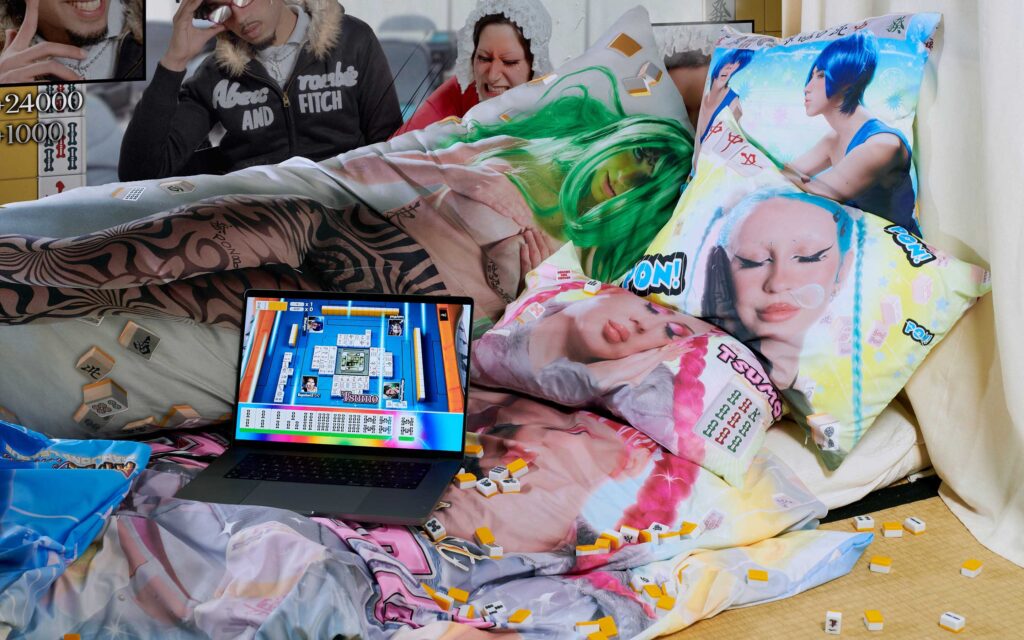
Temple Magazine
For I’d Rather Be Playing Mahjong, you also decided to create merch.
Julian Lee Harather
The project is, in general, a simulation of making my own franchise based on Mahjong that uses the same tropes of having different mediums. So, you have this video game, things that look more like a comic book or a TV show. And then, with all those base media, you get merchandise products like posters featuring individual characters, T-shirts, bed sheets, body pillows, and maybe also other products that give an overview of what would be encompassed in this brand. For me, it was funny to turn this game, which is still very niche in the West, into this giant franchise with its own media powerhouse.
Temple Magazine
Within your series, you created the Princess Mahjong League franchise. How did you develop your main characters?
Julian Lee Harather
I stuck to certain tropes or archetypes that I strongly associate with. Since there is no actual narrative in the project itself, it was important for me that by just seeing the characters, you could make up your own story. You have characters that people would themselves kind of attribute as antagonists or pick their own main character simply based on the styling, facial expressions, poses, or color schemes. People can make their own cluster of relationships and decide how the characters relate to one another. Since the anime or manga visual language is usually super over-the-top and highly visually coded, there is this tradition of highly exaggerating, which also makes it quickly readable and clear what traits a character represents simply by their appearance.
What’s funny is that I also realized that, at least for me, it feels like every person, if you look at them closely, doesn't really look like a good person. Like, they all kind of look like they have ulterior motives.
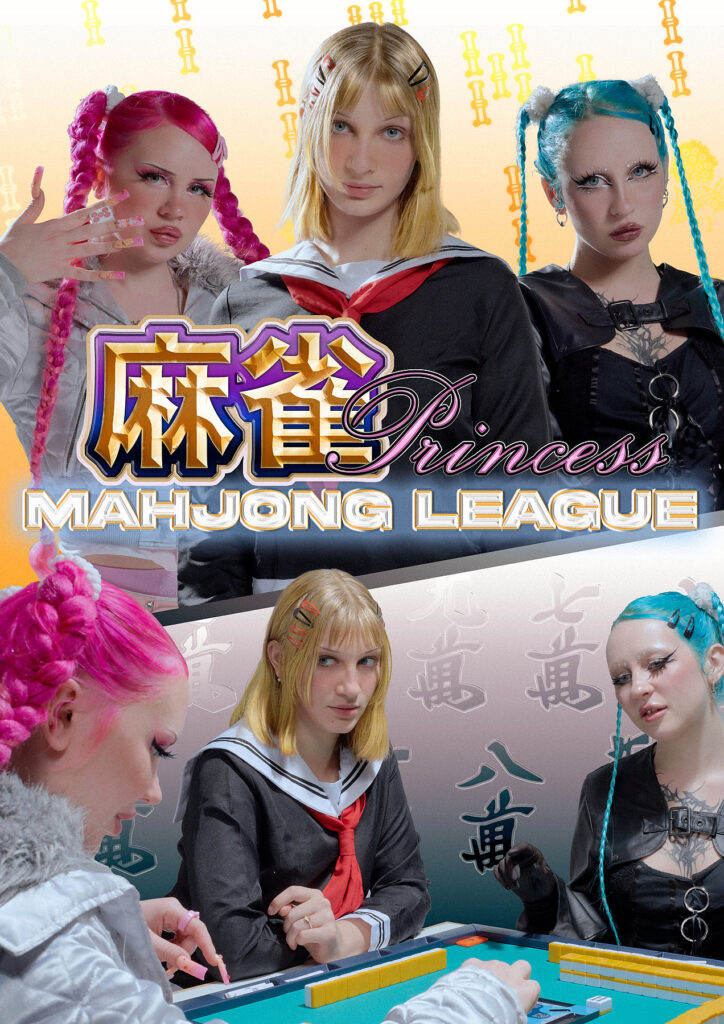
Temple Magazine
Which is part of the tension of the game?
Julian Lee Harather
For sure, and it makes so much sense for this game that is so heavily based on gambling and is in some parts really stigmatized as Yakuza-related, like a gangster game played illegally with money and very high-stakes bets. So, the game does have dark aspects to it as well. I think it’s interesting to have this very surface level with a very colorful, bubblegum, poppy, youthful aesthetic, but then to have the characters in this aesthetic still look like they're, you know, naughty. Like if they had the chance, they would immediately take all your good tiles.
Temple Magazine
Would you say that, in that sense, merch can also be something that people are drawn to and find cool because it’s wearable? Like you mentioned before, one can consume something without being a part of it or the community?
Julian Lee Harather
That’s a big aspect as well. I find it kind of absurd that a whole world of a franchise, which is filled with so much symbolism and meaning, can somehow be reduced to just a merchandise product. It’s a bit of a full loop—starting as something obscure and then trying to make it so relevant that it loses some of its value again in the process. It can be very similar to the current trend of wearing football shirts for a sportier aesthetic or vintage band shirts for a cool look, turning them into a styling product.
Temple Magazine
Is it also something to maybe signify that you are part of knowing that this is cool? Like with people wearing vintage band shirts, the music seems to have had a bit of a comeback.
Julian Lee Harather
Definitely, you show that you're part of this group, or you're in on the joke or whatever. I think that’s the same thing I hope this joke will flourish in the future—that people would wear these shirts without knowing the game.
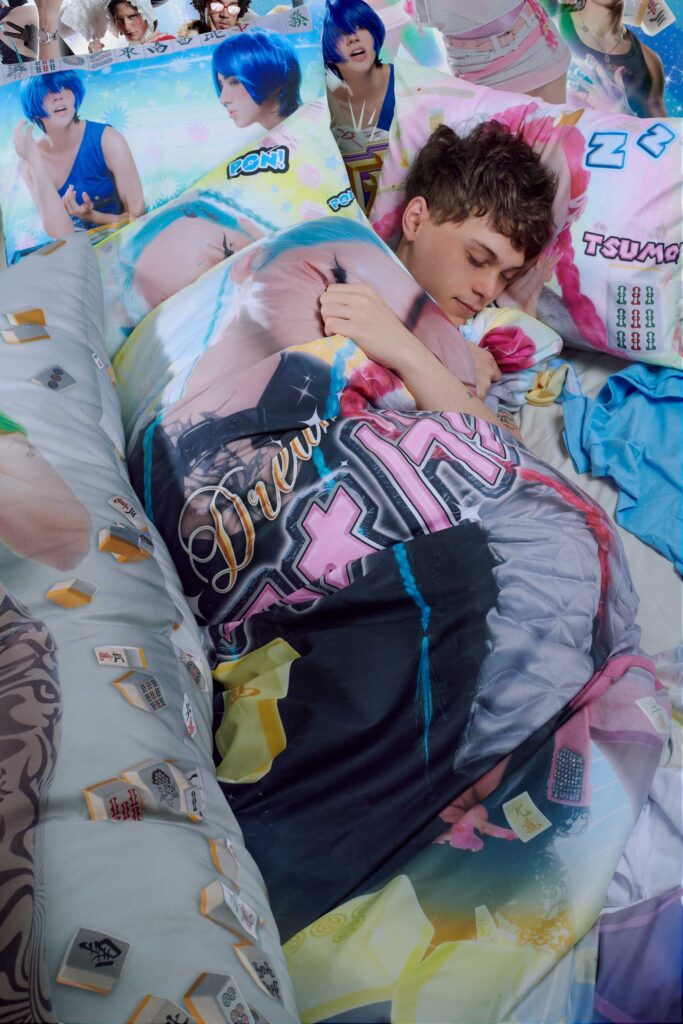
Temple Magazine
You chose a bedroom installation for the presentation of your work. How does this private space relate to Mahjong?
Julian Lee Harather
It relates more to the general topic of obsession and fan culture. The bedroom is usually the space where you can see most of the images or where the products of this franchise flourish. For me, it made sense to show a very intimate space where these objects exist, in a real space. I think it’s also a space that a lot of people curate especially for themselves. It’s a safe place where you can search for an identity, and a room can be really telling of the values and interests a person has.
Temple Magazine
Does it also connect to the fact that when you play Mahjong online, you spend most of your time in this virtual space, and you’re also kind of alone in your bedroom playing that game for hours? And when you look up from the screen, you see it all around you?
Julian Lee Harather
Yes, it totally plays with that. It’s a form of escapism, like curating your own reality. But I’m not trying to make a statement that this is necessarily good or bad. I think it's supposed to play with this idea that, through this obsession, everything around you that you at least have control over is closely tied to this one specific world.
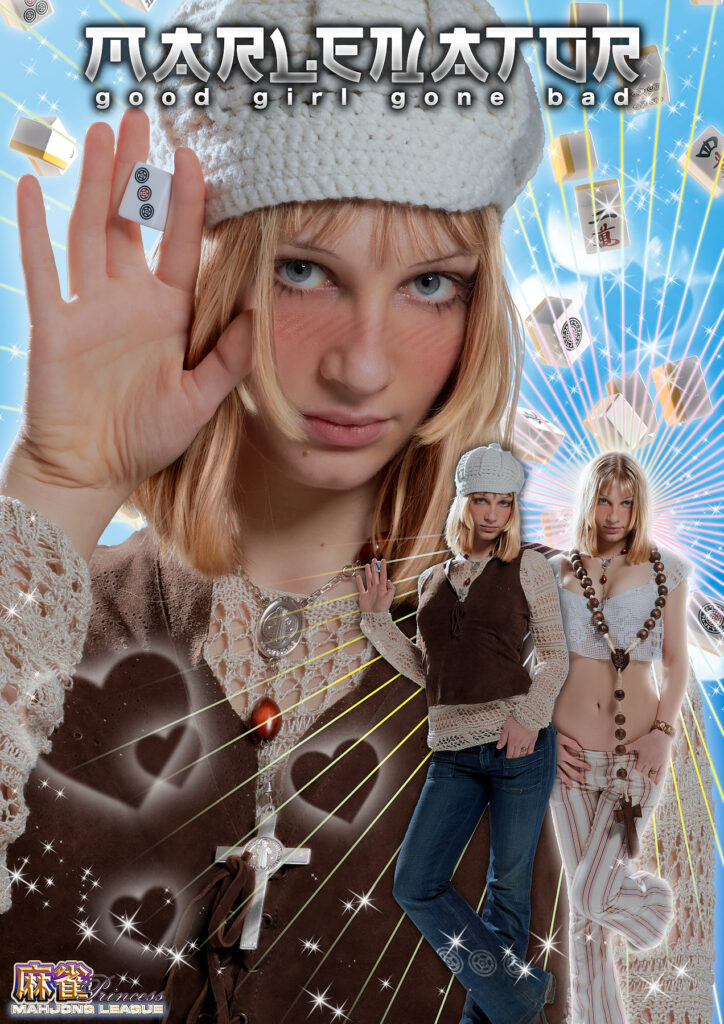
Temple Magazine
How do you plan to continue this project?
Julian Lee Harather
My main goal is to make a book out of it, that looks like a single Mahjong-tile. For me it once again reflects on this philosophy that a whole universe can fit into a single drop of water and how this plays with the scaling of worlds and realities. I’m also planning to make more images with the objects that are now in the installation to give them a presence in the book as well. I think it would be funny to play with different tropes of how fashion and merchandise could be consumed, and to show this whole range of the way that these objects are advertised. I’d love to take images of of people candidly wearing it in their everyday life to kind of show that it's widespread enough to be ingrained into pop culture and mainstream media.
Temple Magazine
So is this what you dream of?
Julian Lee Harather
When I first explained the concept to my professor she said: “It kind of sounds like a marketing campaign to get everyone to play Mahjong” And I was like “Yeah, that might actually be true.”.
